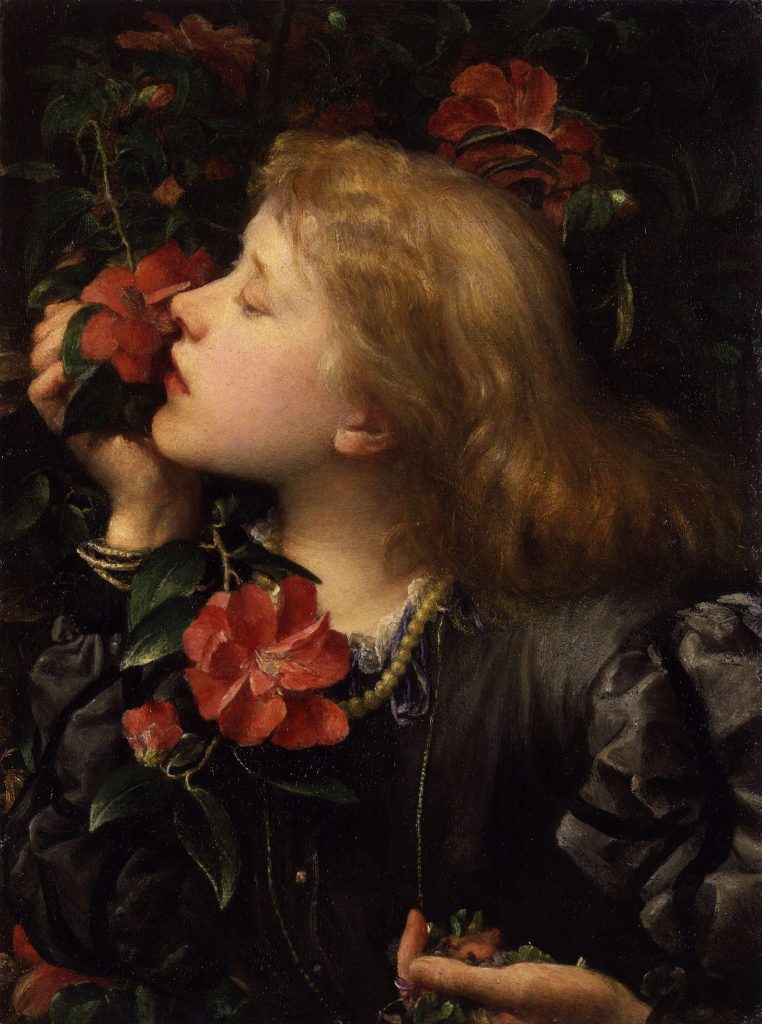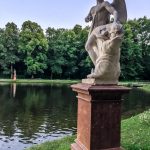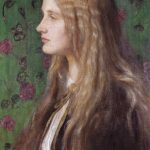
Watts was born in Marylebone in central London on the birthday of George Frederic Handel (after whom he was named), to the second wife of a poor piano maker. Delicate in health and with his mother dying while he was still young, he was home-schooled by his father in a conservative interpretation of Christianity as well as via the classics such as the Iliad. The former put him off conventional religion for life, while the latter was a continual influence on his art.
He showed artistic promise very early, learning sculpture from the age of 10 with William Behnes, starting to study devotedly the Elgin Marbles (later writing “It was from them alone that I learned”) and then enrolling as a student at the Royal Academy at the age of 18. He first exhibited at the Academy in 1837. He also began his portraiture career, receiving patronage from his close contemporary Alexander Constantine Ionides, who later came to be a close friend.
He came to the public eye with a drawing entitled Caractacus, which was entered for a competition to design murals for the new Houses of Parliament at Westminster in 1843. Watts won first prize in the competition, which was intended to promote narrative paintings on patriotic subjects, appropriate to the nation’s legislature. In the end, Watts made little contribution to the Westminster decorations, but from it, he conceived his vision of a building covered with murals representing the spiritual and social evolution of humanity.
The prize from the Westminster competition did, however, fund a long visit to Italy from 1843 onwards, where Watts stayed and became friends with the British ambassador Henry Fox, 4th Baron Holland and his wife Augusta at their homes in Casa Feroni and the Villa Careggi. Also while in Italy Watts began producing landscapes and was inspired by Michelangelo‘s Sistine Chapel and Giotto‘s Scrovegni Chapel. In 1847, while still in Italy, Watts entered a new competition for the Houses of Parliament with his image of Alfred the Great, Alfred Inciting the Saxons to Prevent the Landing of the Danes by Encountering them at Sea, on a patriotic subject but using Phidean inspiration.
Return to England
Leaving Florence in April 1847 for what was intended to be a brief return to London, he ended up staying. Back in Britain, he was unable to obtain a building in which to carry out his plan of a grand fresco based on his Italian experiences, though he did produce a 45 ft by 40 ft fresco on the upper part of the east wall of the Great Hall of Lincoln’s Inn entitled Justice, A Hemicycle of Lawgivers (completed 1859), inspired by Raphael‘s The School of Athens. In consequence, most of his major works are conventional oil paintings, some of which were intended as studies for the House of Life.
In his studio, he met Henry Thoby Prinsep (for 16 years a member of the Council of India) and his wife Sara (née Pattle). Watts thus joined the Prinsep circle of bohemians, including Sara’s seven sisters (including Virginia, with whom Watts fell in love but who married Charles, Viscount Eastnor in 1850), and Julia Margaret Cameron. Previously staying at 48 Cambridge Street, and then in Mayfair, in 1850 he helped the Princeps into a 21-year lease on Little Holland House, and stayed there with them and their salon for the next 21 years. (The building was the dower house on the Hollands’ London estate in Kensington, near the house of Lord Leighton.)
One of only two pupils Watts ever accepted was Henry’s son Valentine Cameron Prinsep; the other was John Roddam Spencer Stanhope – both remained friends, but neither became a major artist. While living as a tenant at Little Holland House, Watts’s epic paintings were exhibited in Whitechapel by his friend the social reformer Canon Samuel Barnett, and he finally received a commission for the Houses of Parliament, completing his The Triumph of the Red Cross Knight (from The Faerie Queene) in 1852–53. He also took a short trip back to Italy in 1853 (including Venice, where Titian became yet more of an inspiration) and with Charles Thomas Newton to excavate Halicarnassus in 1856–57, via Constantinople and the Greek islands.
In the 1860s, Watts’s work shows the influence of Rossetti, often emphasizing sensuous pleasure and rich color. Among these paintings is a portrait of his young wife, the actress Ellen Terry, who was 30 years his junior – having been introduced by mutual friend Tom Taylor, they married on 20 February 1864, just seven days short of her 17th birthday. When she eloped with another man after less than a year of marriage, Watts was obliged to divorce her. Watts’s association with Rossetti and the Aesthetic movement altered during the 1870s, as his work increasingly combined Classical traditions with a deliberately agitated and troubled surface, to suggest the dynamic energies of life and evolution, as well as the tentative and transitory qualities of life. These works formed part of a revised version of the House of Life, influenced by the ideas of Max Müller, the founder of comparative religion. Watts hoped to trace the evolving “mythologies of the races [of the world]” in a grand synthesis of spiritual ideas with modern science, especially Darwinian evolution. Source: Wikipedia.





